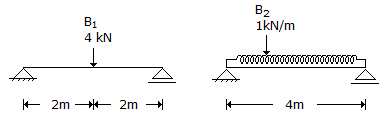Civil Engineering - UPSC Civil Service Exam Questions
Exercise : UPSC Civil Service Exam Questions - Section 11
- UPSC Civil Service Exam Questions - Section 14
- UPSC Civil Service Exam Questions - Section 27
- UPSC Civil Service Exam Questions - Section 26
- UPSC Civil Service Exam Questions - Section 25
- UPSC Civil Service Exam Questions - Section 24
- UPSC Civil Service Exam Questions - Section 23
- UPSC Civil Service Exam Questions - Section 22
- UPSC Civil Service Exam Questions - Section 21
- UPSC Civil Service Exam Questions - Section 20
- UPSC Civil Service Exam Questions - Section 19
- UPSC Civil Service Exam Questions - Section 18
- UPSC Civil Service Exam Questions - Section 17
- UPSC Civil Service Exam Questions - Section 16
- UPSC Civil Service Exam Questions - Section 15
- UPSC Civil Service Exam Questions - Section 1
- UPSC Civil Service Exam Questions - Section 13
- UPSC Civil Service Exam Questions - Section 12
- UPSC Civil Service Exam Questions - Section 11
- UPSC Civil Service Exam Questions - Section 10
- UPSC Civil Service Exam Questions - Section 9
- UPSC Civil Service Exam Questions - Section 8
- UPSC Civil Service Exam Questions - Section 7
- UPSC Civil Service Exam Questions - Section 6
- UPSC Civil Service Exam Questions - Section 5
- UPSC Civil Service Exam Questions - Section 4
- UPSC Civil Service Exam Questions - Section 3
- UPSC Civil Service Exam Questions - Section 2
26.
Consider the following statements :
Kiln seasoning of timber results is :
1. reduced density.
2. reduced life.
3. dimensional stability.
Which of the following given above is/are correct ?
Kiln seasoning of timber results is :
1. reduced density.
2. reduced life.
3. dimensional stability.
Which of the following given above is/are correct ?
27.
The approximate ratio of strength of 15 cm x 30 cm concrete cylinder to that of 15 cm cube of the same concrete is
28.
Consider the following characteristic of soil layer :
1. Poisson's ratio
2. Young's modulus
3. Finite nature of soil layer
4. Effect of water table
5. Rigidity of footing
Westergaard's analysis for pressure distribution in soils utilises
1. Poisson's ratio
2. Young's modulus
3. Finite nature of soil layer
4. Effect of water table
5. Rigidity of footing
Westergaard's analysis for pressure distribution in soils utilises
29.
Consider the following statements associated with the laws of weights in the theory of erros :
1. If an equation is multiplied by its own weight, then the weight of the resulting equation is equal to the reciprocal of the weight of the equation.
2. The weight of the algebraic sum of two or more quantities is equal to the reciprocal of the sum of the individual weights.
3. If the quantity of a given weight is multiplied by a factor, then the weight of the result is obtained by dividing its given weight by the square root of that factor.
4. If the quantity of a given weight is divided by a factor, then the weight of the result is obtained by multiplying its given weight by the square of that factor.
Of these statements :
1. If an equation is multiplied by its own weight, then the weight of the resulting equation is equal to the reciprocal of the weight of the equation.
2. The weight of the algebraic sum of two or more quantities is equal to the reciprocal of the sum of the individual weights.
3. If the quantity of a given weight is multiplied by a factor, then the weight of the result is obtained by dividing its given weight by the square root of that factor.
4. If the quantity of a given weight is divided by a factor, then the weight of the result is obtained by multiplying its given weight by the square of that factor.
Of these statements :
30.
The given diagrams show the details of two simply supported beams B1 and B2. EI is constant throughout the length and same for both the beams. The beams have the same area of cross-section and the same depth. What is the ratio of maximum bending stress in B2 to that in B1 ?


Quick links
Quantitative Aptitude
Verbal (English)
Reasoning
Programming
Interview
Placement Papers
